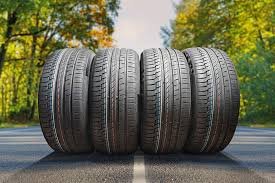Choosing the right tire size can make all the difference in your vehicle’s handling, comfort, and performance. Tires like 285/65 R18 and 215/65 R17 are designed for distinct vehicle types and driving conditions, offering unique advantages depending on your needs. This guide dives into the details of each tire size, explaining their features, primary uses, and which tire might be the ideal fit for your vehicle.
Breaking Down Tire Specifications: 285/65 R18 and 215/65 R17
Understanding what each part of these tire sizes means can help you see why they differ in performance and suitability for different vehicles.
- 285/65 R18:
- 285: This is the tire’s width in millimeters, meaning the tire is 285 mm wide from sidewall to sidewall. This wider size provides a larger contact patch, enhancing stability and traction.
- 65: The aspect ratio, representing the sidewall height as a percentage of the tire’s width. Here, 65% of 285 mm gives a taller sidewall, which is excellent for absorbing shocks and providing a more comfortable ride, particularly on rough or uneven roads.
- R18: The “R” stands for radial construction, the standard for most modern tires due to durability and smooth handling. The 18 indicates the diameter of the wheel, meaning this tire fits an 18-inch wheel, commonly found on SUVs and trucks.
- 215/65 R17:
- 215: With a width of 215 mm, this tire is narrower, offering less road contact than the 285 but contributing to improved fuel efficiency and easier handling for compact or midsize vehicles.
- 65: The aspect ratio is also 65%, providing similar sidewall height relative to its width, balancing comfort and performance.
- R17: This tire has radial construction and fits a 17-inch wheel, a standard size for many sedans, midsize SUVs, and crossovers.
Key Differences Between 285/65 R18 and 215/65 R17 Tires
While these two tires share the same aspect ratio, their width, wheel diameter, and intended uses set them apart. Here’s how each performs in different conditions:
- Performance:
- The 285/65 R18 tire is designed for larger vehicles like trucks and SUVs, providing excellent stability and traction on various terrains. The wide width and larger wheel size make it suitable for off-road driving or vehicles that need enhanced control and grip.
- The 215/65 R17 is a more compact tire, ideal for everyday driving on city streets and highways. Its narrower profile and smaller diameter offer easy handling and a smoother ride for smaller SUVs and sedans, prioritizing fuel efficiency and control.
- Comfort and Ride Quality:
- The 285/65 R18 tire’s wide profile and taller sidewall give it superior shock absorption, making it a great choice for rough terrain and uneven roads. This size excels in delivering a stable and comfortable ride, even on rugged surfaces, making it well-suited for off-road adventures.
- With its narrower design, the 215/65 R17 also offers comfort but is better suited for paved roads and urban environments. Its balanced design ensures a comfortable ride on smooth surfaces, though it might feel less stable on rugged terrain compared to the wider 285 tire.
- Traction and Stability:
- The 285/65 R18 tire offers greater traction, especially on off-road surfaces, due to its wider tread and larger contact area. This makes it ideal for trucks or SUVs that frequently tackle muddy, snowy, or loose surfaces, where added grip and stability are crucial.
- The 215/65 R17 performs well on regular roads, offering reliable traction and stability for lighter vehicles. However, it’s not designed for the challenging conditions that the 285/65 R18 can handle, making it best for daily commuting and light highway use.
- Fuel Efficiency:
- Wider tires like the 285/65 R18 have more rolling resistance, which can reduce fuel efficiency slightly, especially on paved roads. However, this is a trade-off for the added control and performance they offer on off-road terrain.
- The 215/65 R17 tire’s narrower width helps to reduce rolling resistance, resulting in better fuel efficiency. This size is optimal for drivers who prioritize economical driving and seek a cost-effective tire for urban and highway use.
When to Choose 285/65 R18 vs. 215/65 R17
Both tire sizes are tailored to specific types of vehicles and driving conditions. Here’s a quick guide to help you decide which tire may be best for your needs:
- Choose 285/65 R18 if:
- You drive a larger vehicle, like a truck or SUV, and frequently encounter rugged or off-road conditions.
- Stability, traction, and durability are essential, especially for outdoor or adventure driving.
- You need a tire that can handle challenging terrains, loose gravel, mud, or snow.
- Choose 215/65 R17 if:
- You drive a midsize or compact SUV, crossover, or sedan, primarily on city streets and highways.
- Fuel efficiency, comfort, and cost-effectiveness are more important than off-road performance.
- You’re looking for a tire that handles well in urban settings, where agility and economical performance are key.
Final Thoughts
Choosing between 285/65 R18 and 215/65 R17 ultimately comes down to your vehicle type and driving habits. The 285/65 R18 provides the rugged performance, durability, and stability needed for off-road and heavy-duty applications. In contrast, the 215/65 R17 offers a smooth, fuel-efficient ride for everyday city and highway driving.
For optimal performance, consult with a tire professional who can assess your vehicle and recommend the ideal size based on your driving style and terrain requirements. The right tire choice enhances not only safety but also your overall driving experience.
